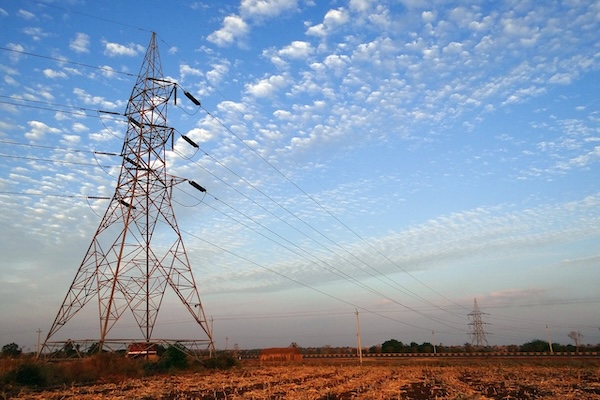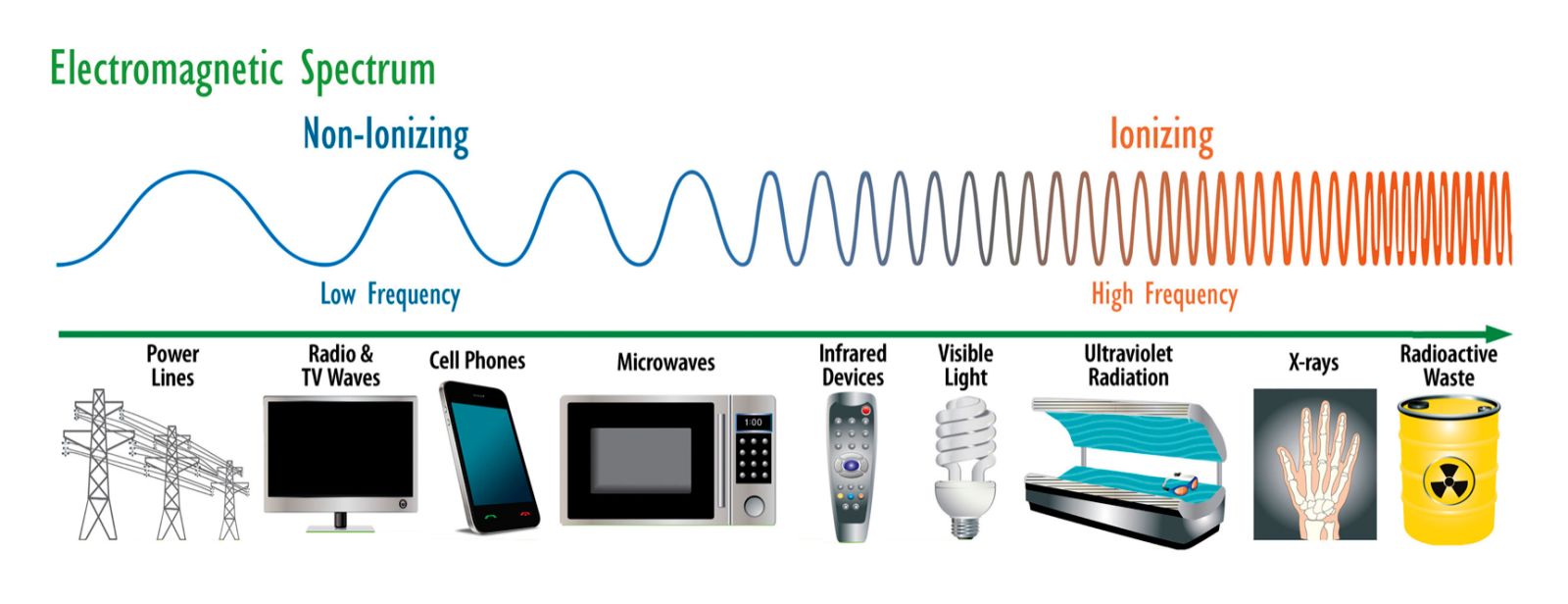The Problem Nobody Can See
 Many of us are familiar with the saying that every adversity carries the seeds of equal or greater opportunity. This certainly proved painfully true for me. My son was a happy child who had not missed a day of school in over two years and had never received a grade other than A. Only after we moved back to my home state of Montana did I realize — rather belatedly — that our new home had been built under massive power-lines. I wouldn’t have thought much of it, but within one year of our move, my son seemed off. Unable to pin down his anxiety, well-meaning school counselors and doctors suggested the pharmaceutical route. Rather than simply address my son’s symptoms, I exhaustively researched possible causes for his altered behavior, and discovered that he was suffering from E.H.S, or Electro-hypersensitivity syndrome, a prognosis that would change our lives forever.
Many of us are familiar with the saying that every adversity carries the seeds of equal or greater opportunity. This certainly proved painfully true for me. My son was a happy child who had not missed a day of school in over two years and had never received a grade other than A. Only after we moved back to my home state of Montana did I realize — rather belatedly — that our new home had been built under massive power-lines. I wouldn’t have thought much of it, but within one year of our move, my son seemed off. Unable to pin down his anxiety, well-meaning school counselors and doctors suggested the pharmaceutical route. Rather than simply address my son’s symptoms, I exhaustively researched possible causes for his altered behavior, and discovered that he was suffering from E.H.S, or Electro-hypersensitivity syndrome, a prognosis that would change our lives forever.
As it turned out, the strong electromagnetic fields (or EMFs) being emitted from the power lines overhead were slowly killing my son. In the end, I learned how to help him and others, but it was a long road.
I took a deep dive into E.H.S., his illness, the causes of EMF radiation, and dirty electricity, and was surprised to discover that EMFs caused by dirty electricity are, indeed, real. While dirty electricity is wasteful and inefficient for appliances and tech devices, it has been proven to be harmful to the biological and natural world. Not only can it harm people, but it also affects precious beneficial insects like bees. Additionally, researchers have observed that dirty electricity is deleterious to plants and indoor grows, though it’s best documented in dairy cows.

niehs.nih.gov/health/topics/agents/emf
It is now suggested that 12 percent of the population suffer from E.H.S., with those numbers expected to grow yearly as we are over exposed to the vast proliferation of e-pollution. When I stood directly under those power lines above our house, I could hear them buzzing, and even feel my hair stand on end. As soon as I walked far enough away, however, those sensations quickly faded. For my son, unfortunately, any time he was in the home, they were inescapable; the constant ear ringing, skin oversensitivity, and subsequent anxiety were quite literally driving him mad.
Sadly, the reality of e-pollution overexposure and the booming increase of those suffering with E.H.S is, in great part, simply a result of the modern electrified world. The power being delivered by utilities is dirtier than ever. In fact, it’s steadily getting worse because, on a macro level, our power usage changed with things like the massive increase of indoor grows and crypto-miners; on a micro level, we all contribute.
When it comes to wind power, the areas of the country best suited (and with enough space to allow the number of massive wind turbines necessary for both greater grid capacity and ROI) tend to be in the middle of nowhere. This poses a challenge when delivering this renewable electricity to urban areas where it is most often needed; a challenge exacerbated by “dirty electricity”. From a technical point of view, as a wind turbine spins, it creates a sine wave of AC power in "variable frequencies" (in order to be able to take advantage of varying wind speeds). The grid, however, only operates at a 60Hz fixed or primary frequency, meaning the resulting variable frequency has to be converted into DC to stabilize it, after which an inverter is used to convert it back into a 60Hz AC primary frequency so it can be used be used by existing power lines. Most inverters generate an extremely "dirty" signal (i.e., a 60Hz waveform)
 The Midwest Rural Energy Council published research on wind farms and resulting stray voltage, which they define as, “…differences that can exist between two surfaces that are accessible to animals (stanchion, waterer, floor, etc.). When an animal touches both surfaces simultaneously, a small electric current will flow through its body. If the current is high enough, it can be felt by the animal and may cause behavioral changes. Stray voltage is usually caused by electrical currents that flow on the neutral and grounding conductors of a farm’s electrical system.”1 Animal sensitivity is beyond contestation as the principal on which electric fences are effective. I’ve personally interviewed farmers that state dairy cows won’t even step in a puddle if they sense stray voltage. If simple proximity affects livestock, it’s not much of a leap to imagine what happens to human beings.
The Midwest Rural Energy Council published research on wind farms and resulting stray voltage, which they define as, “…differences that can exist between two surfaces that are accessible to animals (stanchion, waterer, floor, etc.). When an animal touches both surfaces simultaneously, a small electric current will flow through its body. If the current is high enough, it can be felt by the animal and may cause behavioral changes. Stray voltage is usually caused by electrical currents that flow on the neutral and grounding conductors of a farm’s electrical system.”1 Animal sensitivity is beyond contestation as the principal on which electric fences are effective. I’ve personally interviewed farmers that state dairy cows won’t even step in a puddle if they sense stray voltage. If simple proximity affects livestock, it’s not much of a leap to imagine what happens to human beings.
Before you work up your counter argument involving the much greater distances between farms and urban locations, consider this revelation: “…of great importance are reforms to interregional transmission planning, which are critical to expedite the build-out of high-capacity, long-distance transmission lines to transport renewables from areas with abundant, cheap wind and solar resources to load centers, while improving the resilience of the grid to extreme weather events.” 2
It’s neither popular nor comfortable to report that, while wind is “clean” in that it’s renewable, the power itself is — sadly — dirty, as inverters, by their sheer operation, create huge electromagnetic fields (EMFs) and subsequent Dirty Electricity (DE). It is equally painful to report that the “Smart” or “Net” meter also creates huge levels of EMFs, acting as a powerful Wi-Fi transmitting tower on the side of the home, all in the name of creating a fully-electrified future. Since we’re working hard to make sure that our clean energy is saving the planet, and hurtling towards carbon neutral, it's worth discovering if we, as carbon creatures, can keep pace.
B.D. Erickson II is CEO of Satic Shield, which designs plug-in and wire-in filters that clean electrical service, increase the life span of everything within its sphere (biological and electrical) of influence, save money, and the planet.
Satic Shield | saticshield.com
1 https://apps.psc.wi.gov/ERF/ERFview/viewdoc.aspx?docid=404757
2 https://rmi.org/ferc-could-slash-inflation-and-double-renewables-grid-upgrades/
Author: B.D. Erickson
Volume: 2024 July/August








